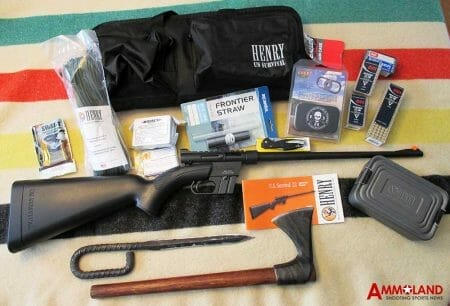Thomas Conroy, a survival expert, puts building survival shelters at the very top of the list to make it through an emergency outdoors and the tools you need to make it.
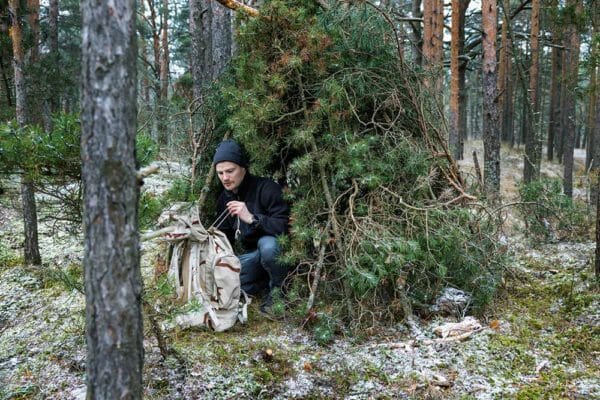
USA – -(Ammoland.com)- We spend so much time inside climate-controlled houses, shopping malls, and workplaces that we forget our lives are possible only within the span of 9 degrees.
From 95°F up to 104° F is the very narrow range of internal body temperatures we can withstand before we get into serious, life-threatening trouble.
That’s why every survival expert puts shelter at the very top of the list to make it through any emergency. If you don’t take shelter, it won’t matter how much other survival gear you might have on hand. The undeniable truth is that without our clothing, tools, and technology, we are fragile creatures who can quickly perish because of what might seem like relatively minor changes in weather and temperature.
If your core temperature drops below 95° F – less than 4° below the healthy normal of 98.6° – you slip into hypothermia, which can quickly kill you. The weather doesn’t have to be cold for you to fall victim to hypothermia. With just a little bit of a breeze, especially if your skin is already wet with sweat from exertion or from a tumble into a stream or pond, what feels like a warm day can quickly become a life-threatening situation.
Likewise, overexposure to the strong sun and high temperatures can also kill us. Heat stroke happens when your body temperature rises only about 5.4° to around 104° F. Heat stroke can kill us even more rapidly than hypothermia.
Having a few shelter-building tools on hand can help you protect yourself against both hypothermia and heat stroke. I’ve compiled a list and arranged them in ascending order. I’m assuming you already have proper clothing for whatever outdoor activity you engage in. I’m also assuming that you already slipped a cigarette lighter or waterproof matches or some other fire-making tool into your pocket or pack (if not, read my “Top 5 Fire Making Survival Tools”) and have made some provision for drinking water. (if not read my “Top Five Survival Water Filters“)
Here is my list of Top 5 Tools for Building Survival Shelters
#5) Folding Shovel
Folding shovels are wonderful pieces of kit for surviving in the field. There are reasons militaries have issued shovels to troops for thousands of years, returning to the Romans. Workable folding shovels – or entrenching tools – have been available since around WWI.
A packable, lightweight, and strong shovel is incredibly versatile for outdoor survival. If you’re in deep snow, such a tool can help you dig a snow cave or snow shelter around the base of an evergreen tree. In a hot, dry environment, a shovel can help you dig a depression to get out of the sun and wind, maybe even find water beneath a dry streambed.
With a small shovel, you can reconfigure the dirt floor of your shelter into a comfy bed, dig a fire pit, or a sanitary latrine. You can solve drainage problems, kill snakes, and even cut small brush and bushes with a sturdy shovel.
A good friend of mine who’s an Eagle Scout likes to say, “If you’ve got a shovel, you’ve got civilization.”
Be sure to get a good, high-quality shovel. Another friend of mine once bought a cheap one from an online retailer. The very first time we took it into the field, and tried to dig worms for fish bait underneath an old cow patty, that cheap shovel folded up like a foil gum wrapper. Good thing we weren’t in a real emergency situation with that piece of junk.
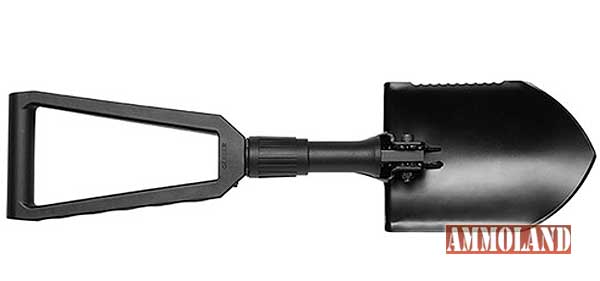
#4) Tomahawk or Hatchet with Hammer Poll
Tomahawks or hatchets are also incredible survival tools. They pack a lot of power into a relatively small package that you can wear on your belt, tie to your pack, or easily carry around in your hand. The hatchet’s sharp edge combines with the handle’s length and the metal head’s weight to give you great cutting and striking power. Such tools make it easy to cut poles and stakes for shelter building. If you get a tomahawk or a hatchet with a hammer poll on the back side, you can easily drive stakes into the ground to secure tents or the edges of your lean-to.
Evergreen boughs instantly become the thatching for a lean-to. You can easily chop firewood. It’s also a good self-defense tool. You can use such a tool to cut brush, clear a trail, mark trees to help searchers find you, clean game, and break down animals the size of deer into manageable pieces. Like a folding shovel, the uses of a hammer poll tomahawk or hatchet are almost limitless.
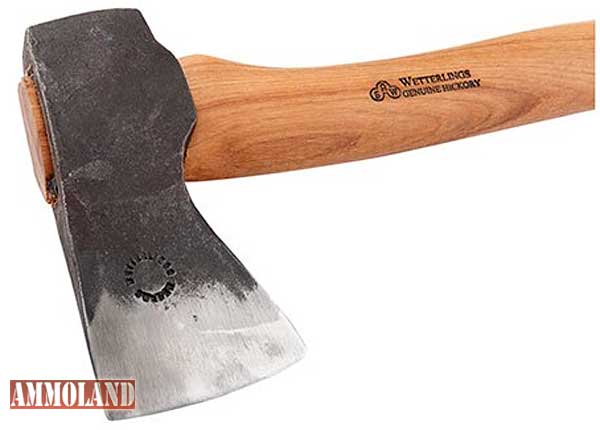
#3) Knife.
You should never leave the house without a knife and a way to make a fire. If you’re depending on the knife to potentially save your life in a survival situation, make sure you pick a good-quality blade. Look at a lock blade knife like the Spyderco Endura 4 Wave Plain Edge Folding Knife or a fixed blade knife like the Rothco G.I. Pilots Survival Knife that comes with good sheaths.

Knives are probably humanity’s oldest tool, starting with a sharp flake of flint, obsidian, or some similar stone. A good knife offers much of the same versatility as a hatchet but in a smaller, more-controllable package. While the hatchet will split wood more easily, you can actually split small logs with a knife using a technique called “batoning.” You get the edge into the small log and use another chunk of wood – the baton – to beat the blade down the length of the piece of wood you’re trying to split.
Featured knife: Cold Steel Voyager Xl Tanto Plain Edge Knife
You can do so many things with a good knife that there’s just no excuse for not having one on you all the time. If you’re serious about being prepared, you’ll probably have several knives in your pockets, in your packs, glove compartments, and bugout bags. If you decide not to have a folding shovel and a hatchet, at least make sure you have a knife.
#2) String.
You can find many survival and primitive skills classes that will teach you traditional, ancient methods for making cordage. It’s a great skill to have. But modern cordage is so abundant and easy to get that there’s really no excuse for not having at least a hundred feet or so in your gear. If you don’t have a shovel or hatchet or even somehow forgot to bring along a knife, you can still make a shelter with enough good string or cordage.
Run a length of string between two trees, and then drape a sheet of plastic over it, and you’ve got an instant shelter. If you don’t have a piece of plastic or tarp, lean sticks against the line to form a structure Just about any string strong enough to support the weight will work. Heavy test monofilament fishing line, 550 Para cord, or even a package of cheap nylon rope from a big-box store can become the central support for an instant shelter.
If you have more time or brought some of those other tools with you, you can lash lengths of wood together to make a more solid frame structure.
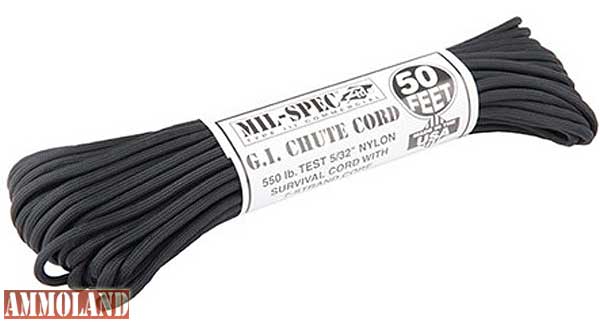
#1) Military Poncho or Tarp
Even if you don’t have a shovel or a hatchet, forgot your knife and didn’t bring any string, and have a military surplus poncho or tarp, you still have shelter. Many military surplus ponchos were designed as shelter halves and have reinforced grommets to accept tie downs or small stakes to secure them. Tarps also usually have reinforced grommets for tie-downs and work great as a tent or screen. Both ponchos and tarps also function as ground covers to insulate you against cold, wet earth.
If all you can do is find a spot where you can lay one piece of dead wood between the branches of adjoining bushes, drape your poncho or tarp over it, stake down the edges with other sticks or even heavy rocks, and you’ve got shelter. If you can’t do that, just wrap the poncho or tarp around you for wearable shelter. If you buy a military surplus poncho, try to also get a poncho liner to go with it. Poncho liners, sometimes called woobie blankets, add a layer of efficient insulation and padding and improve heat-holding abilities. A poncho and a woobie make a workable, improvised sleeping blanket or bedroll. You can buy specialized survival tarps like the Sport Utility Blanket at Brownells or even pack some heavy-duty trash bags in your kit to help you retain heat better.
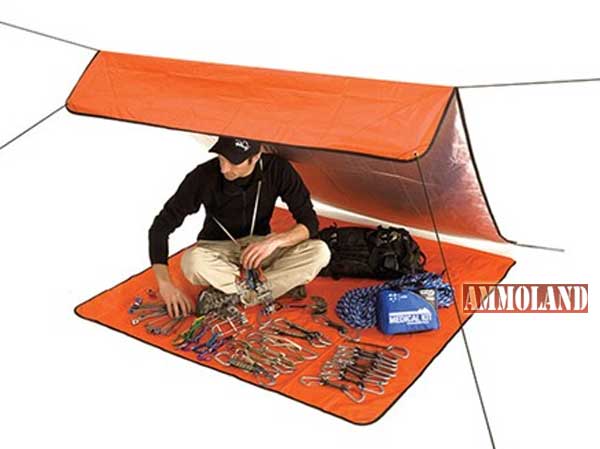
It Can Save Your Life
We’ve all probably heard that it takes about 40 days to starve without food and that we can live only about three days without any water. But just getting too hot or too cold can kill us within minutes, long before we’d have time to feel hunger or thirst. Having the knowledge and the tools to protect yourself against heat and cold is an absolute requirement if you plan to survive any sort of emergency.
Thomas Conroy is a writer and firearms aficionado who lives in the Midwest.




